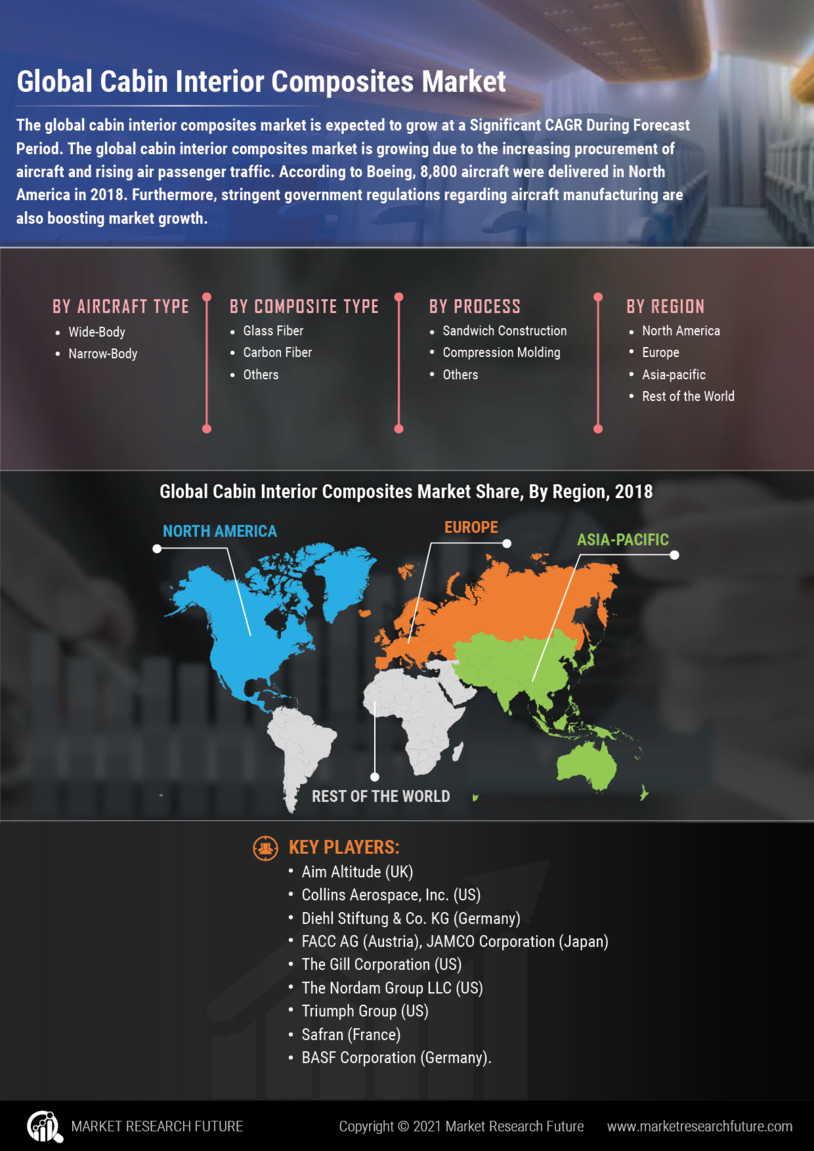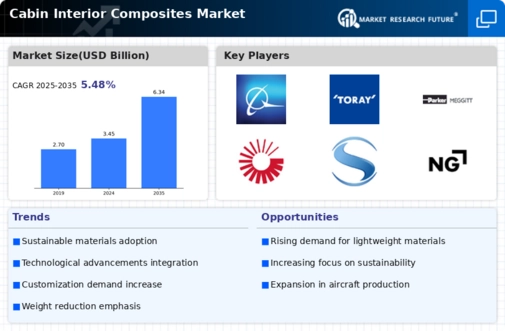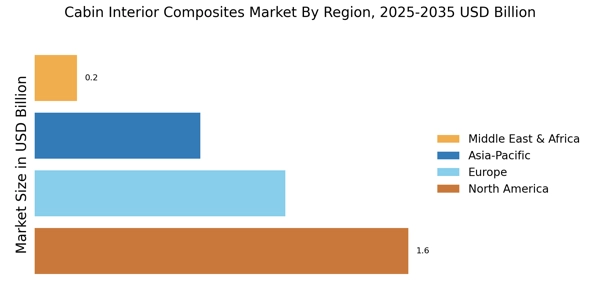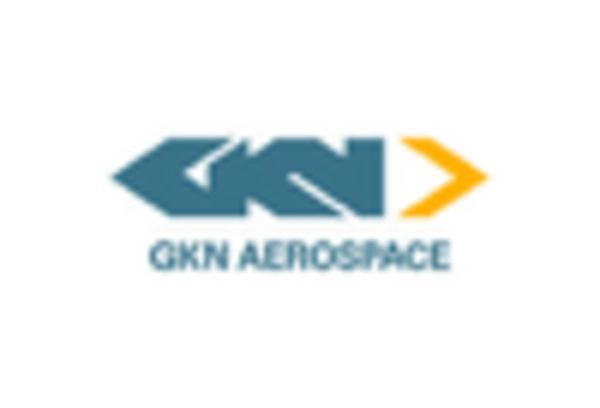Cost Efficiency
Cost efficiency remains a vital driver for the Cabin Interior Composites Market. Airlines are under constant pressure to reduce operational costs while maintaining high standards of service. The use of lightweight composite materials can significantly lower fuel consumption, thereby reducing overall operational expenses. Additionally, these materials often require less maintenance and have longer lifespans compared to traditional materials, further contributing to cost savings. The market is expected to see a rise in demand for cost-effective composite solutions, with projections indicating a growth rate of around 5% in the coming years. As airlines seek to optimize their operations, the Cabin Interior Composites Market is likely to benefit from this focus on cost efficiency.
Regulatory Compliance
Regulatory compliance is emerging as a crucial driver for the Cabin Interior Composites Market. Governments and aviation authorities are implementing stringent safety and environmental regulations that necessitate the use of advanced composite materials in cabin interiors. Compliance with these regulations not only ensures passenger safety but also enhances the overall quality of cabin environments. The market is witnessing a shift towards materials that meet fire safety standards and other regulatory requirements. This trend is likely to propel the demand for high-performance composites, with projections indicating a potential market growth of 5% over the next few years. As a result, manufacturers are increasingly focusing on developing materials that align with these regulatory frameworks, thereby shaping the future of the Cabin Interior Composites Market.
Sustainability Initiatives
The increasing emphasis on sustainability within the aviation sector appears to be a pivotal driver for the Cabin Interior Composites Market. Airlines and manufacturers are increasingly adopting eco-friendly materials to reduce their carbon footprint. This shift is evidenced by the growing demand for lightweight composites that not only enhance fuel efficiency but also comply with stringent environmental regulations. The market for sustainable cabin materials is projected to grow at a compound annual growth rate of approximately 7% over the next five years. As a result, the Cabin Interior Composites Market is likely to witness a surge in innovations aimed at developing biodegradable and recyclable materials, thereby aligning with global sustainability goals.
Technological Advancements
Technological advancements in manufacturing processes and materials science are driving the Cabin Interior Composites Market forward. Innovations such as 3D printing and advanced composite materials are enabling manufacturers to create lighter, stronger, and more durable cabin components. These advancements not only improve the overall passenger experience but also contribute to operational efficiency. The integration of smart technologies into cabin interiors, such as enhanced lighting and climate control systems, is also gaining traction. The market is expected to see a significant increase in the adoption of these technologies, with estimates suggesting a growth rate of around 6% annually. Consequently, the Cabin Interior Composites Market is poised for substantial transformation as these technologies become more prevalent.
Passenger Experience Enhancement
Enhancing passenger experience is a significant driver for the Cabin Interior Composites Market. Airlines are increasingly recognizing the importance of comfort and aesthetics in cabin design, leading to a demand for innovative composite materials that can improve the overall ambiance. Features such as noise reduction, improved lighting, and customizable interiors are becoming essential components of modern cabin design. The market is projected to grow as airlines invest in upgrading their fleets with advanced composite materials that offer these enhancements. Estimates suggest that the focus on passenger experience could lead to a market growth rate of approximately 4% annually. Consequently, the Cabin Interior Composites Market is likely to evolve to meet these changing consumer expectations.


















Leave a Comment